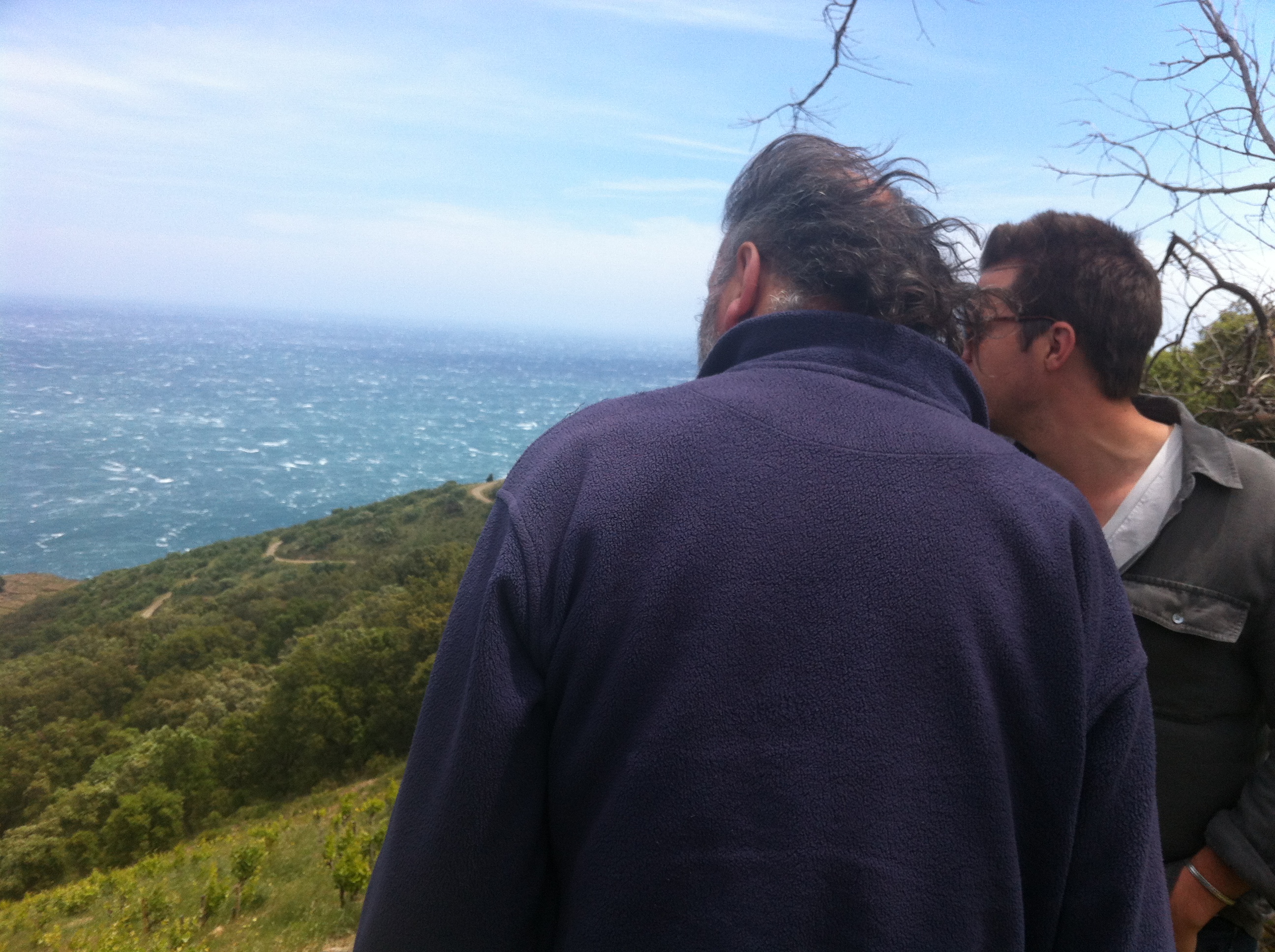
With Alain Castex at Clôt de Taillelauque, Banyuls-Sur-Mer
Among the most influential natural winemakers of all time, Alain Castex passed away in June of 2023 at the age of 73. True to form, he died in the vines, his heart having expired on a beautiful late spring day. Lara and I first met Alain more than a decade ago- we visited his Banyuls garage on our honeymoon – and over the years our family became close with him. The running joke was that Alain, an old school French communist, really hated doing business with an American but somehow learned to tolerate it, maybe because he loved Lara and the kids so much.
Une Fleur au Fusil – a rose in a rifle – is an appropriate metaphor for a man who, in both his winemaking and his intellectual life, was capable of grace and fire in equal measures. Alain’s demeanor was shy and laconic but his intellect was sharp as a razor, his body strong as a vine. He was up to date on everything from the current issue of Le Monde Diplomatique to peasant debates on how to manage drought in the South of France. I can’t recall ever hearing him boast but he never hesitated to drop a mot juste when he perceived bullshit.
Alain’s winemaking was in constant flux since the 1980s, making it impossible to neatly summarize. We first encountered him during the Casot era, when the wines were characterized by a brash and rustic Mediterranean beauty. The wines could be unhinged but they were free and unapologetic, a quality as rare then as it is now. In Banyuls, where technological winemaking had a monopoly at the time, people were never sure whether to refer to Alain’s wines as classical or avant-garde. My feeling was that they reminded the old timers of something they had forgotten and they gave hope of a new future to the young guys. When I learned about Alain’s earlier work in Corbières, stretching from the late 80s to the late 90s, I imagined that the style must have been similar. On the contrary, I was surprised to learn how much things had changed. After tasting them some time ago, Alain reminisced about the wines of that earlier era: organic viticulture and relatively conventional vinification including filtration and some sulfites. “There might have even been some yeast,” he recalled. He was totally unashamed of this history – a precondition, he supposed, for what was to develop in the coming decades.
Alain recently told me that a common mistake in winemaking and in life is the failure to evolve. When he left the windswept seaside terraces of Casot in 2015, he rented a plot of land outside of Perpignan, where the plain of Rivesaltes meets the Pyrenees foothills. Les Vins du Cabanon was a fitting description of his modest accommodations and the terroir’s rather ordinary designation. Alain enjoyed the comparatively easy terrain of Trouillas – flatter and less exposed to the elements – though drought was only slightly less severe than in Banyuls. Already regarded by that time as a legend, he could have simply turned on the irrigation hoses, jacked the prices, and settled into early retirement. Instead, he began anew with a “subsistance agriculture” that made very little money but left us with delicately perfumed and thirst-quenching wines from a place known for neither. During these last years of his life Alain also acted as a mentor to many young people, by whom he was surrounded until the end. He was likely to be the first and maybe the eldest customer at any new bistro that opened in the region. He was also often the last person at the table. And when young winemakers needed help Alain was always the first to offer it to them, irrespective of their philosophy or pedigree.
Mediterranean tradition says that one isn’t truly gone until they’re forgotten. Alain left us a lot to work with.
-J.E.
